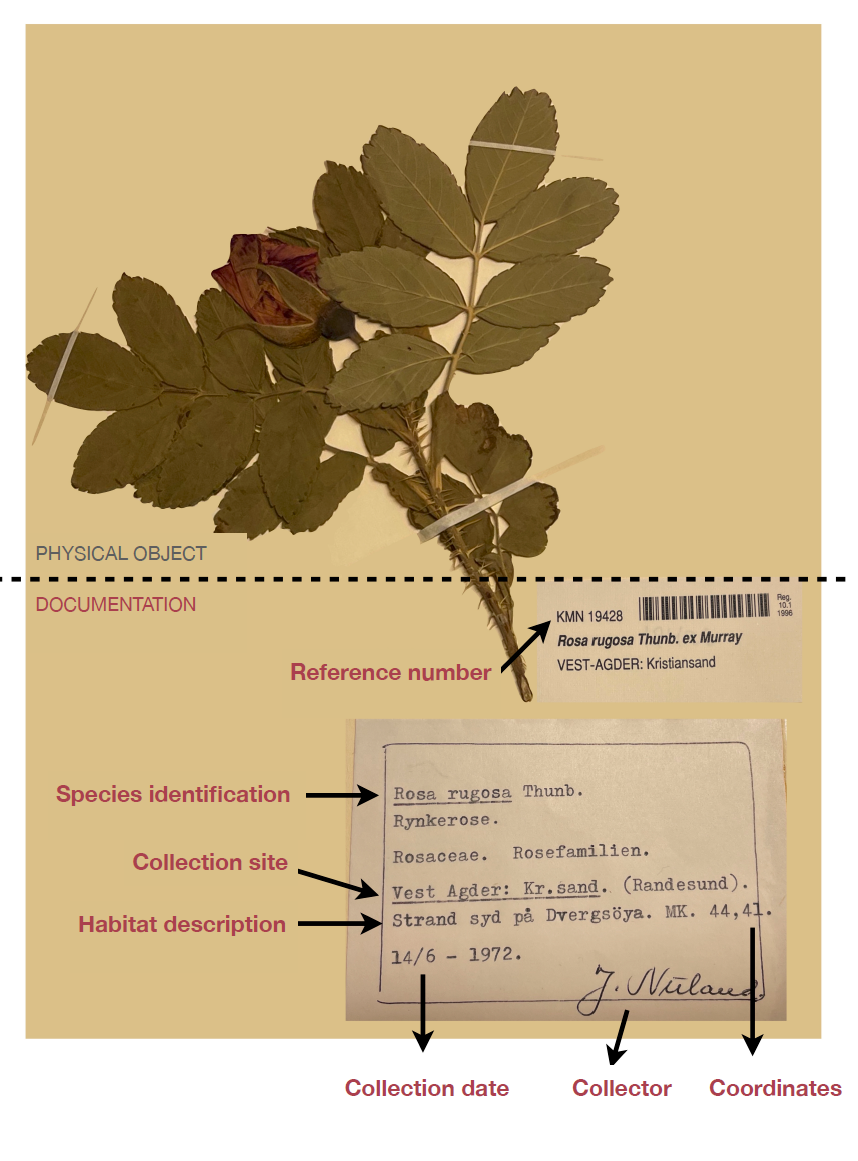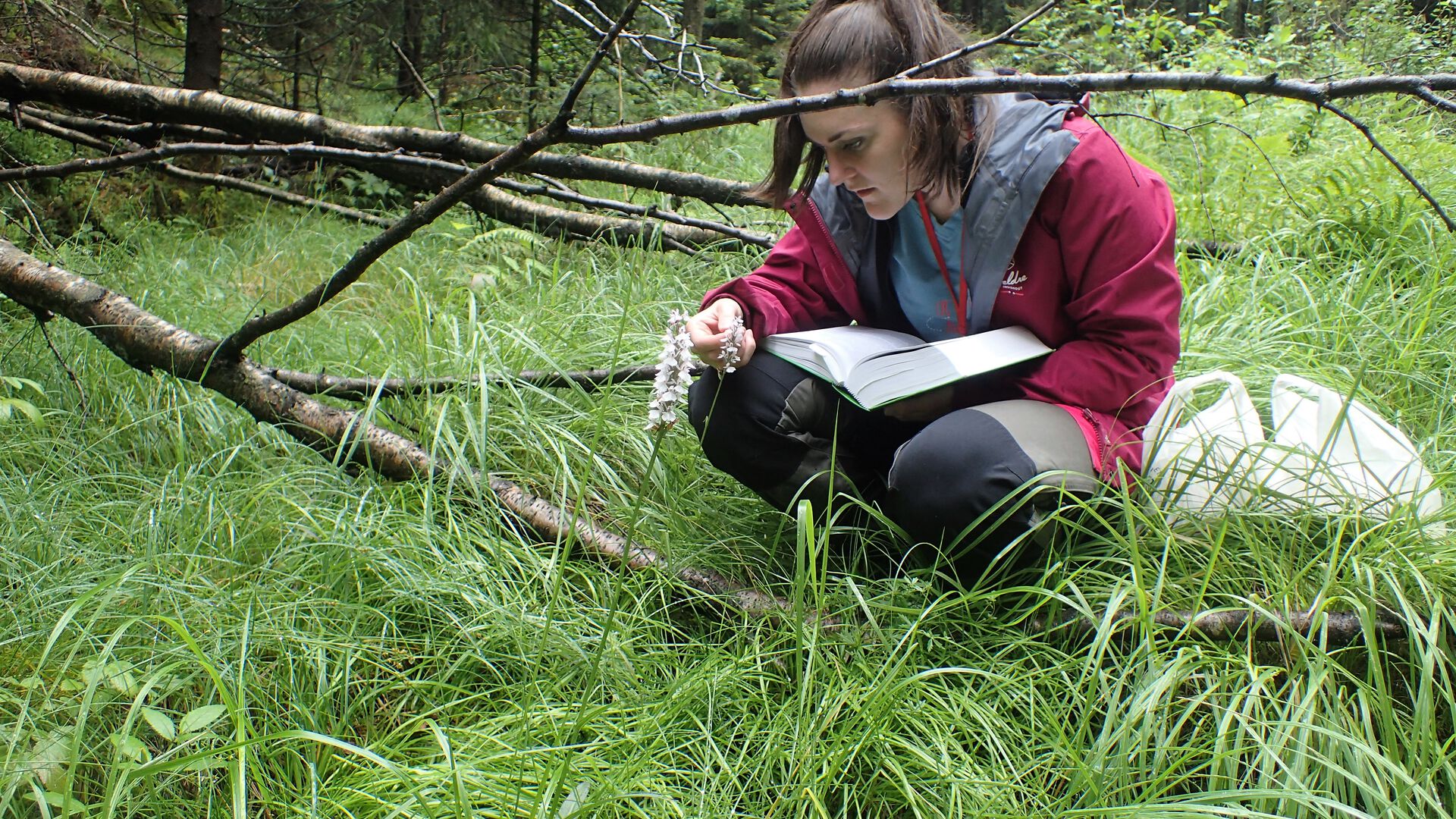A herbarium is a collection of dried and pressed plants. It can be compared to a library of past and present plants.
--beskjert.jpeg)
Botanical Collection
Herbarium—the "dead" collection
Our botanical collection consists of The Botanical Garden, the living plants, and the herbarium, the dead plants.
A herbarium is a collection of dried and pressed plants. It can be compared to a library of past and present plants.
Every plant in the collection is attached to a special paper along with a label. The label tells you what species the plant is, where and when it is found, who found it, who identified it, and how it looked where the plant was found alive and growing. The herbarium contains algae and mosses as well.
We have approximately 80 000 dried plants in our herbarium. Most of the plants are collected from Agder. The oldest plants are from the 1830’s, more than 190 years old!
The herbarium is not open for general visits but we do occasionally arrange guided tours, especially upon educational or scientific requests.
.jpeg)
The living collection

The living collection includes the botanical garden, the cacti house with cacti and succulent plants, and Ljosland alpine garden. The collection consists of approximately 2000 plants with corresponding documentation. The living plants are cared for as long as possible.
The living collection is always open for visitors.
The importance of the botanical collection
The botanical collection has great scientific value. It makes it possible to study evolutionary changes (DNA), distribution and occurrence, in time.
A big part of the collection is irreplaceable. Some of the plants are presently extinct, locally or globally, and some plants came from an environment that no longer exist.
The scientific collections are very important for research on changes in biodiversity. The collections are a source of knowledge. They can help us understand many of the challenges and threats we face today, for example challenges associated with endangered species, invasive species, climate changes and the spread of infectious diseases.
The scientific collection has a cultural value as well. A lot of well-known botanists, zoologists and geologists have left their mark on the collections with names and references of where they had been, their interests and findings.

Fieldwork
Collecting data in the field is part of the tasks of the botanist at the museum. Such fieldwork can be, for example, collecting various plants for the herbarium, or mapping the distribution area of a species.


Associations and passionate individuals often assist with the collection of data material. Photo: © Mika Bendiksby
.jpeg)
Even "thick, juicy" flowers can be pressed, it just takes a little longer.
Photo: ©Naturmuseum og Botanisk Hage, UIA/ Lisbeth Breland
.jpeg)
All herbarium specimens have information about the plant.
Photo: ©Naturmuseum og Botanisk Hage, UIA/ Lisbeth Breland
.jpeg)
Older herbarium specimens may be mounted in books instead of individually on sheets.
Photo: ©Naturmuseum og Botanisk Hage, UIA/ Lisbeth Breland
.jpeg)
In the "old days," it was important to include the roots when making a herbarium sheet. Today we leave the roots undisturbed in nature.
Photo: ©Naturmuseum og Botanisk Hage, UIA/ Lisbeth Breland
.jpeg)
Mounting herbarium specimens is a careful task that requires patience and precision.
Photo: ©Naturmuseum og Botanisk Hage, UIA/ Lisbeth Breland
.jpeg)
Photo: ©Naturmuseum og Botanisk Hage, UIA/ Lisbeth Breland
.jpeg)
To preserve and protect the dried and pressed plants, a thin "interleaf" is often placed over them.
Photo: ©Naturmuseum og Botanisk Hage, UIA/ Lisbeth Breland
.jpeg)
In our herbarium, we have approximately 85,000 herbarium specimens.
Photo: ©Naturmuseum og Botanisk Hage, UIA/ Lisbeth Breland
Contact persons
- malene.o.nygard@uia.no
- Phone
- +47 38 14 24 78
Contact Malene regarding the botanical collections - especially the herbarium, plant identification, Ljosland alpine garden, the fern collection, lectures, and education. Malene primarily works on systematics, genetics, species delimitation, hybridization, and conservation.
- per.arvid.aasen@uia.no
- Phone
- +47 37 23 33 26
Contact Per regarding the botanical collections - especially the herbarium, plant identification, Ljosland alpine garden, algae collection (marine benthic algae), medieval botany (monastery gardens), historical perennials and roses, lectures, and publishing
.jpeg?vrtx=thumbnail)
.jpeg?vrtx=thumbnail)
.jpeg?vrtx=thumbnail)
.jpeg?vrtx=thumbnail)
.jpeg?vrtx=thumbnail)
.jpeg?vrtx=thumbnail)
.jpeg?vrtx=thumbnail)
.jpeg?vrtx=thumbnail)